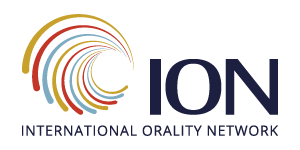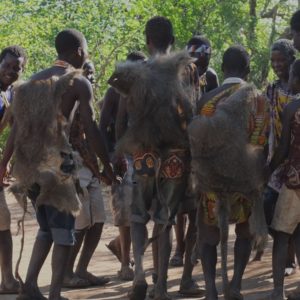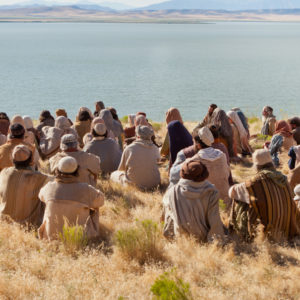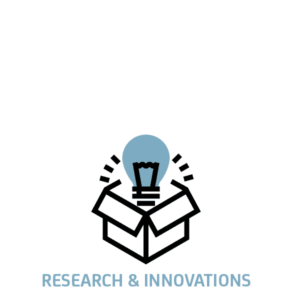The following is a chapter from the book ‘Oralities and Literacies: Implications for Communication and Education‘. A chapter will be posted here each week.
Chapter 3 – Orality and Literacy Revisited
by Gilles Gravelle
Thirty-three years ago Walter Ong published his life’s work in Orality and Literacy. The book was republished in 2002 and again on its 30th anniversary in 2012, showing enduring interest in Ong’s scholarship and ideas. The first volume appeared at a time when people were wondering about the impact new media and communication technology had on how people learn and create knowledge. They feared these technologies were “destroyers of knowledge” (Hartley, 2012).
Non-print Scripture production and distribution (oral, audio, visual) is increasingly popular. People who believe the Word of God is only trustworthy in print see non-print translation and distribution as a threat to “stable” Biblical knowledge. At best, they view non-print Scripture as supplemental for non-literate people. Some believe oral Bible storytelling is simply a lesser introduction where literacy is lacking (de Vries 2015, p. 8). This brings us to the question addressed in this article. Does Ong’s orality and literacy dichotomy still hold? Do individuals in oral cultures learn in different ways than those in literate cultures? Is a universal difference between spoken and written language now proven? These questions matter because they influence people’s perception about Bible translation and Scripture communication. For some people, it is the difference between orality and literacy that drives oral Bible storytelling.
Now thirty-three years after Ong’s Orality and Literacy, what do some linguists, anthropologists, sociologists, educators, and Bible scholars think about his proposed dichotomy? Of course, it is impossible to cover Ong’s research in depth here. At best, this chapter can only provide some insights from diverse authors who have looked into these questions more deeply.
Was Scripture Composition a Literary Process?
Understanding how Scripture was composed, especially the New Testament, may provide a helpful background for understanding print vs non-print Scripture translation and distribution. Distribution means how a text moves into and through society (see Pym 2005). The modern assumption that New Testament composition was individual literary work is one reason why some people do not trust oral Bible translation and oral storytelling.
In early Christianity writing was a service or a trade; something done by secretaries who were often bondservants or tradesmen (Ong 1982, 92, Botha, 2012, p. 67). Literacy was not necessarily individual proficiency in reading and writing. Writers were just that; people who wrote down what the oral composers said. Oral composition required proficiency much the same way good writing requires proficiency today. Readers did not necessarily know how to write. Readers were trained to read a text out loud in group gatherings, but to do this with proficiency they had to know the oral text intimately. They were present during oral composition, so they understood the implicit information, the communication situation, and importantly, how to read it, or perform it the way the oral composer intended it. These sorts of readers were necessary because the population at large were not readers. Thus reading was also a specialized form of literacy.
In summary, composition and distribution in early Christianity required multiple literacies: those who could orally compose, those who could write down the oral composition, and those who could read it, meaning perform it, out loud to people in other locations. Oral composers were the authors. Servants and tradesmen were the scribes, and readers were the trusted oral distributors of the written text. If literacy is knowledge acquisition, creation, and distribution, then orality at that time was a type of literacy in that it involved knowledge creation and distribution by utilizing these people’s skills. (Botha 2012, p. 10).
Evidence points to New Testament Scriptures produced following more of a scribal tradition than a literary tradition, which includes oral and aural processes. Understanding New Testament authorship as an individually authored literary undertaking ignores the complexity of written, oral, and aural interactions at the time.[1]
Orality and Literacy in the Modern Period
In modern times mass literacy has made reading and writing a private or solitary practice, maybe by necessity. But modern literacy assumes individual reading and writing are superior to oral learning within a group setting. One reason for this dichotomy is because, by the modern period, orality and literacy where assumed to be binary oppositions, and orality was less than literacy in terms of human development. Ong’s view of orality and literacy was defined as “ways of managing knowledge and verbalization in primary oral cultures (those with no exposure to writing) and in cultures deeply affected by the use of writing” (1982, p. 2).
Space only allows for a short, simple list of presumed orality features. Orality was paratactic (no sentence connectives), redundant (repeating themes at paragraph boundaries, repeating nouns), and homeostatic (using words only in their current stable meaning, and not using dated terms). Oral cultures used references that are minimally abstract, choosing words that “remain close to the living human world.” They were redundant and copious (1982, p. 31-48).
The search was for universal dichotomies in vocabulary, syntax, and style which distinguished orality from literacy. Differences were based primarily on linguistics, anthropology and philology during the mid-twentieth century (de Vries 2015, p. 2). De Vries references Douglas Biber’s work (1988). Biber looked for properties uniquely associated with “typical” oral and written style, but he could not find any absolute differences. Memory devices and repetitive formulas were found to be used in modern societies that had no print technology for reproducing printed text (2015, p. 9-10). Rather than universal dichotomies, oral (and literate) cultures exhibited interdependencies between oral and written communication.
Still, stereotypes based on presumed universal dichotomies persisted in the late modern period. Literate people were considered to be more intelligent. Literacy was a civilizing agent. It led to logic skills, analytical, critical, and rational thinking (Gee 1994, p. 169-170). Gee also asserts that different societies utilize different types of literacy which produce different social and mental effects in various contexts. Ong saw a strong dichotomy between oral cultures and literate cultures in terms of communication and expression, believing that stylistically, the two were very different, and presumably a person could only practice one or the other (Ong 1982, p. 14).
Orality/Literacy Interface
De Vries and Gee make the case that orality and literacy cannot be held in binary opposition, at least not in linguistic and anthropological terms. Both are literacies that form an interface, depending on situation and context. With this orality/literacy interface, written grammar bears the burden of communication where social interaction is missing. With oral communication, social interaction and participation on the part of the hearer helps negotiate meaning (Gee 2012, p. 732).
If literacy is a different way of making sense, then in this sense, orality is a form of literacy. This kind of interaction between orality and literacy is collaborative composition much as it was in early church times. With oral performance, “the text is actualized rather than fictionalized, when written” (Street 2012, p. 139-150). As Gee points out, “What is at issue in the use of language is different ways of knowing, different ways of making sense of the world of human experience, that is different social epistemologies” (2012, p. 77).
Those are the opinions of some linguists. Today some anthropologists and sociologists do not see any basic characteristics that differentiate literate from preliterate cultures. Ruth Finnegan also distinguishes the ways different cultures use various communication methods at different times in history. She goes further saying, “… the once-confident assertions about the supposed differentiating features of oral and literate cultures is decidedly shaky” (2014, p.39-40). From a historical perspective, she considers orality to be a form of information technology, depending on social and cultural usage. She argues that oral traditions in terms of styles and performance change over time, but it is still a literacy medium of choice, even in modern Western society, although perhaps not always acknowledged as such.
Oralities
In terms of oral literature, John Miles Foley (1999, p. 3) had this to say:
We now know that cultures are not oral or literate; rather they employ a menu or spectrum of communicative strategies, some of them associated with texts, some with voices and some with both. Likewise, we know that people are seldom either literate or illiterate, oral or post-oral; rather we recognize that even a single individual employs a repertoire of possible methods of communications, depending on genre, communicative strategy, audience, and other factors.
Foley spoke about hearing and reading signs, such as descriptive phrases, adverbial phrases, language register, and idiomatic content, which both oral and literary traditions utilize. However, these are only linguistic signs. Oral performance more easily utilizes non-linguistic signs. Grammaticalizations are encoded orally and visually, such as emphasis using hand jesters. Aspect and mood is marked by facial expressions. Prosodic markers are a complex array of voice changes at the right points in the text. Voice weakness and intensity along with body postures denote speaker attitudes.
Different cultures utilize different forms of orality, again depending on situation and context. Some are formal features while others are informal. These correlate with different desired auditory or visual effects for different audiences (Rosa, 2015, p. 211). Finnegan describes a variety of oral composition styles among Pacific cultures, which depend on certain precise genre. Like written communication, oral style and performance requires a literacy of sorts to get it right (1990, p. 171-173).
Meyah Orality
For the Meyah people of Indonesia, oral performance in telling or singing is the medium of choice for communicating Scripture, for maintaining long term oral history, or for contemporary needs, such as newly written Scripture recomposed for signing.
Comparing Meyah oral composition with Ong’s “psychodynamics of orality” (1982, p. 31-48), Meyah language speakers have ways of marking a number of speaker attitudes grammatically on word roots (Gravelle 2010). Yet their use of contracted speech patterns and pitch-accent prosody are stylistic features that oral telling requires in ways that writing cannot deliver.
An attempt was made to write their oral traditions. Even though they could read, it was difficult reading because their oral style utilizes word contractions in complex ways. Pronouncing every word fully, which was required in written form, was less than satisfying because it lacked the non-linguistic signs used in oral storytelling. Oral style is more elegant and indeed required for proper storytelling of oral histories. But reading contracted speech was impossible without reading it out loud and painfully slow. With the Meyah, contracted speech is not simply fast speech. It is oral style.
A feature of primary orality is said to be narrative with simple parataxis (Ong 1982, p. 36). At the sentence and paragraph level, Meyah oral style appears to be that way. It’s a common feature of Papuan languages. Meyah oral style utilizes parataxis and subordination. On the discourse level, narrative stories include embedded genre, such as hortatory and didactic content, with a variety of complex clause linkages. Knowing how to use these genres in storytelling is a special form of orality that needs to be acquired, much like a writer needs to develop a writing style for certain genre.
Oral cultures are said to be redundant and copious (Ong 1982, p. 39), and that may be the case with some, but it is the opposite of good oral style for the Meyah. They do not like redundancy, so thematic content (who, what, when, where, how) is stated once and only occasionally referenced later in the oral text. Not repeating known information is good oral style.
Finally, Meyah oral history is collective memory and not verbatim. That is, older people can recall significant parts of their history, but there are memory gaps that other people fill. Minor details may differ from telling to telling, but the general themes are consistent. Oral histories are best told in group settings, because each individual adds their part to the whole. Some negotiation takes place, correcting parts of the story, and in the end everyone agrees on the final product. This is how they have preserved their stories for hundreds of years.
This is one example of how orality differs from place to place, and as a form of literacy, it is not easily replaced with print technology. As in the early Greco-Roman world of writing, the twenty-first century Meyah see writing as a way to preserve and assist what must be told. It is an orality and literacy interface where both are needed and desired.
Conclusions
While a linguistic and anthropologic dichotomy between orality and literacy have proven to be less than so, the narrow Western construct of what literacy is also proves to be less than so. Orality is a form of literacy if we understand literacy to be something that produces different social and mental effects in various contexts (Gee 2012), or that literacy is knowledge acquisition, creation, and distribution (Botha 2012). In these ways, literacy should assume certain oral/aural practices that cannot be satisfactorily provided through reading and writing, and indeed for learning, remembering, and being functional.
Assuming only “essay-text literacy” in Bible translation training and theological training “privileges one social formation as if it were natural, universal or at least the end point…” (Gee, 2012, p. 732). In non-Western settings, it assumes individualistic reading as learning in a context where learning is oral, aural, and group-oriented. Scholars have shown that oralities and literacies exist as interfaces, used in different contexts. These days, Bible translators, trainers, and consultants can improve accuracy, stability, and distribution by harnessing the possibilities afforded by a variety of oralities and literacies.
My hope is this brief article helps to alleviate some of the concerns people have about orality. And rather than a defensive posture, they take on a strategic posture of working alongside indigenous people who already get the possibilities of orality and literacy.
Notes
[1] Lourens de Vries comments that biblical texts are the result of scribal cultures, not oral cultures. This does not mean that orality was not important, it was, but it received a specific place determined by how writing and speaking interact in scribal cultures when they (re)produce their (religious) literatures. Second, oral-written interfaces change constantly, and technology is an important driver of the changing dynamics of speaking, writing, listening and reading. (Personal conversation)
« Oralities & Literacies – Chapter 4 &#...Oralities & Literacies – Chapter 2 &#...»








